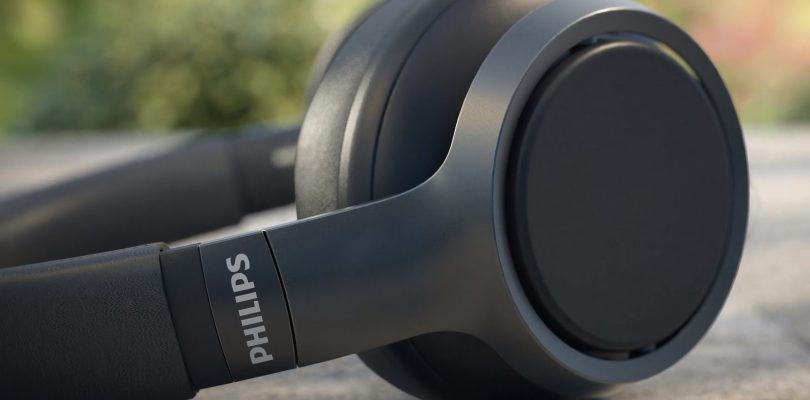The headphone market is a treat few consumer electronics manufacturers overlook. According to the Statista consultancy, the first five months of this year in China, which is currently the largest market for these devices, generated revenues of $ 4.476 billion. If we add to this figure the revenues of other large markets, such as Europe, the United States or Japan, the final amount unambiguously reflects that consumers like headphones.
A very obvious consequence of the enormous competition in this market is that consumers can get good quality headphones by investing a moderate amount of money in them. However, the most accessible models have become cheaper; those of the high and premium ranges have also reduced their price. The Philips Fidelio L3s to which we will dedicate this review exemplifies wonderfully a trend that has put us sound fans in a sweet moment.
Here is a spoiler to warm up the atmosphere before getting into flour: due to their finish and the materials that Philips has used in their manufacture, these Fidelio L3 are decidedly premium headphones. However, they fit better in the high range for their price (we can get them without having to search much for less than 240 euros). In addition, they have active noise cancellation and, as we are about to see, their specifications are very promising. We have tested them thoroughly, and we can anticipate something before we dive into them: they will give a lot of war in their price segment.
Philips Fidelio L3: technical specifications
The specifications that the manufacturers of audio devices promise us are not always aligned with the sound quality they can deliver, so it is in our interest to adopt a reasonably skeptical stance towards them, at least until we have the opportunity to try them. In my opinion, this is the starting point from which we are interested in taking a look at the figures for these headphones, which are unusually promising as we are about to see.
The electrodynamic speakers of these headphones have a diaphragm of 40 mm, a diameter that a priori should allow them to deliver a deep bass end.
In the technical description of these Fidelio L3, Philips tells us that the electrodynamic speakers of these headphones have a diaphragm of 40 mm, a diameter that a priori should allow them to deliver a deep bass end. However, this brand of Dutch origin does not tell us what material it has used in the manufacture of the diaphragm, and neither what type of magnet it uses to control its excursion movement, although, in high-end headphones like these, it has probably used neodymium magnets.
According to Philips, the frequency response exhibited by these headphones ranges between 7 Hz and 40 kHz, a very wide range that, if limited to the real capacity of these Fidelio L3s, would greatly exceed the sensitivity of our hearing system. In addition, this brand gives us the maximum input power they support (20 mW). Users are interested in knowing if we intend to use them with a certain frequency with cable because it can help us choose the most appropriate amplification for them.
The version of the Bluetooth standard that these Fidelio L3 implement is 5.1. It seems to be a success that they propose an unusually wide range of profiles/codecs. It is worth highlighting aptX aptX-HD, AAC or A2DP, among other options. They also implement Fast Pair technology, so if we need to connect them wirelessly to a relatively current Android device, we can pair them in a fast and transparent way. We have to turn on the headphones and bring them closer to the mobile or tablet to get Android to ask us if we want to make the connection.
They are built to be bomb-proof, but their ergonomics have room for improvement.
The great 360 g that these headphones weigh betray that Philips has taken great care in its construction. I will not take any detours: these Fidelio L3 are the best-finished headphones in their price range that I have reviewed so far. Its construction rivals that of much more expensive models without any shyness. Both the enclosure of each speaker and the internal structure of the headband are made of aluminum and are impeccably machined.
Plus, the Muirhead leather ear cushions (responsibly sourced, according to Philips) are a real treat. They are extremely soft, and inside they contain a memory foam that adapts very well to the contour of our head, managing to distribute the pressure homogeneously. I can not fault them, although, yes, these pads are not intended to be replaced (at least not easily), so it is worth taking care of them to stay in good condition as long as possible.
As I mentioned, the internal structure of the headband is made of aluminum. The lower part, which is in contact with our head, is covered with soft foam, and the upper part is lined with leather, which gives these headphones a very attractive premium finish. The problem that, in my opinion, the headband has is that it does not maximize the surface in contact with our head because it is excessively narrow, so the headphones exert pressure on a relatively small area. And their 360 g does not make them exactly light, which causes that when used in a prolonged listening session, some fatigue due to mechanical stress may appear.
The ball joint that allows us to act on the angle of rotation of the enclosure so that the pads are placed in a comfortable position and distribute the pressure evenly transmits solidity. I would bet that it can withstand careless use without showing symptoms of fatigue or wear due to mechanical stress, so again, when it comes to construction, these headphones have a very high level.
In the following detailed photo, we see the two physical connectors that these headphones incorporate: the USB-C socket that we can use to charge its lithium-polymer battery and the 3.5 mm jack type connector that we can use if we need to connect them to a device using the cable that Philips gives us together with these Fidelio L3. The two buttons housed in the enclosure of the right earphone are used to activate noise cancellation and enable the collection of ambient sound the first, and to activate the two microphones that each earphone incorporates to interact with the voice assistant. that uses the device to which we have connected the second.
Philips provides us with these headphones, a semi-rigid transport case that we can use to keep them protected whenever we are not using them. It is a good idea to resort to it if we need to carry these Fidelio L3 in a backpack or a bag with other objects to avoid scratching them. As you can see in the following photograph, its interior is padded and incorporates a small pocket to store the connection cables.
They have a first division sound and a cancellation at the height of the best.
To put these headphones to the test, I have resorted to two different usage scenarios. In one of them, I have used my already veteran Samsung Galaxy S10 + as a source from which I have played a very wide selection of musical themes that I know very well through a wireless connection. They all have an impeccable sound take and are available in various formats with and without quality loss. In the other scenario, I connected the Fidelio L3 to the hybrid preamplifier with a headphone jack that acts as the nerve center of the hi-fi equipment that we talked about in-depth in the review.
Here are some of the music tracks that I have used in this test bench. The selection is eclectic because we are interested in having very diverse musical genres represented. In addition, many of these topics are available as a master-quality digital file (FLAC with 24-bit resolution and 96 kHz sample rate), CD-quality (16-bit PCM 44, 1 kHz), and also on vinyl, so I have listened to them in all the versions I have to be able to compare their sound.
If the sound take of the musical theme we are listening to is up to par, the experience that these headphones offer us is outstanding. They have a great




